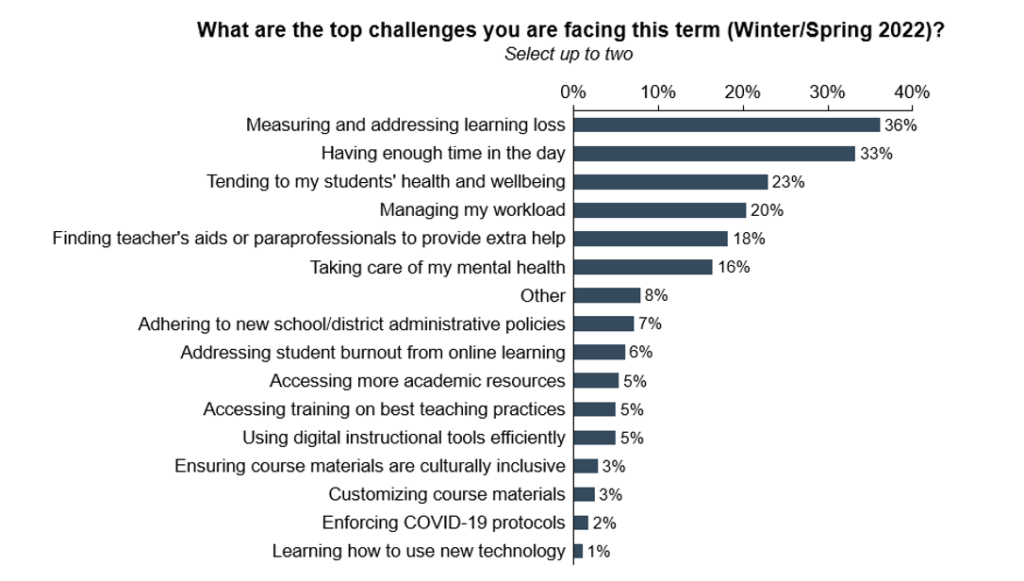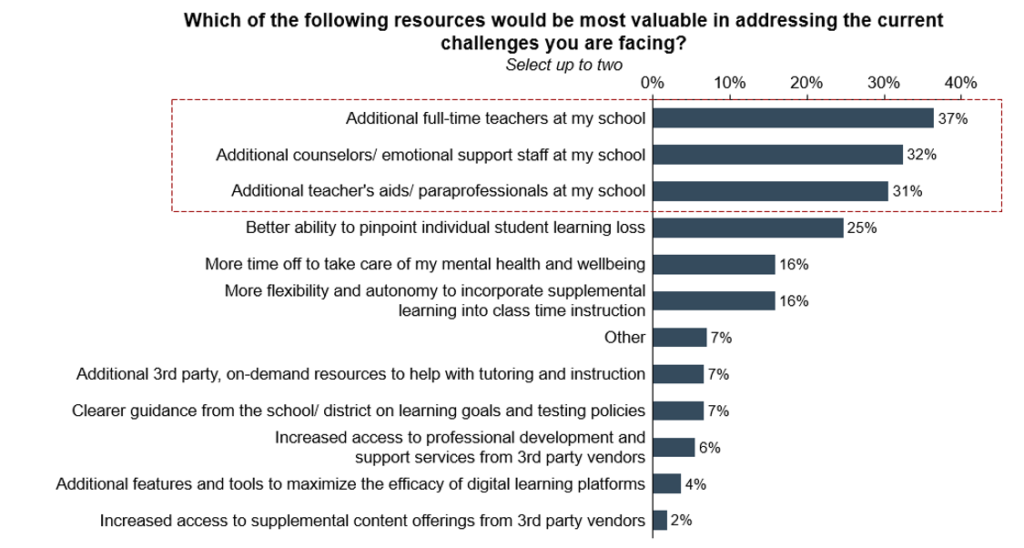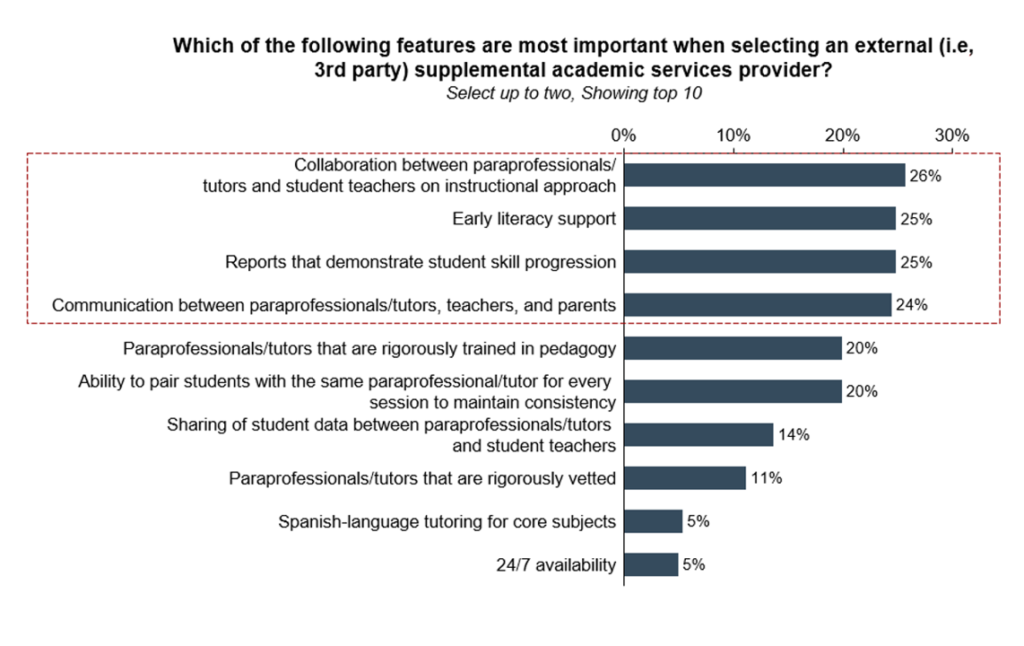Parents and students are attracted to 3-year bachelor degrees, but can institutions make the business model work?
September 23, 2025 BlogDifferentiation is going to be critical for colleges and universities to compete, and more than 60 are now…
The COVID-19 pandemic has caused nationwide drops in K-12 academic benchmarks, with impacts on literacy rates perhaps being the most alarming indicator. Schools’ concerns about the lack of hands-on, in-person instruction, coupled with high levels of vacancies in teaching jobs have been covered broadly by the media. How schools are going to get students back on grade level given teacher shortages is a fundamental question districts and providers alike are seeking answers to.
In late March 2022, we conducted a survey of ~300 school administrators and teachers to better understand what challenges they are facing as focus shifts from COVID-related crisis management to establishing a new “normal” post-pandemic . We were motivated to understand the key issues facing K-12 leaders and teachers today, and selected strategies being employed to address them with particular interest in the role of supplemental academic services.
Not surprisingly, feedback from school leaders and educators indicate they are under significant pressure with not enough time in the average day to manage their workload. On top of pinpointing student learning loss and adjusting instruction accordingly, teachers are also cognizant of and grappling with the emotional toll the pandemic has taken on students’ health and wellbeing, as well as their own mental health.

What administrators and educators need is more staff. When asked about what would help solve the challenges mentioned above (i.e., learning loss and lack of time), respondents identify additional full-time teachers, counselors, and paraprofessionals as the top three most valuable resources.
Additional teachers and staff are in high demand compared to other resources

Despite this desire for more talent and team resource and even with the incremental federal dollars currently available, districts will likely not be able to hire to capacity given future projections of teacher supply. Some estimates on supply vs. demand for new teachers put the deficit at approximately 200,000 unfilled positions by 2025, or ~6.5% of the teaching population.
Supplemental academic services (“SAS”) providers may represent one of the solutions districts turn to, serving as a bridge to additional qualified talent for districts striving at address numerous gaps post-pandemic. In the next three years, decision makers indicate the use of internal staff for providing supplemental services will decline by ~12%, while the use of external contractors and tutoring service providers is likely to increase by ~10%.

Similarly, districts’ intensity of use of SAS providers may increase, as ~50% of decision makers anticipate students will spend more time working with external tutoring providers in the next three years. Facing a shortage of in-house staff, educators indicate an openness to trying varied approaches of instruction to get students back on track. When asked in the survey to comment on student learning loss throughout the pandemic, one administrator commented that “addressing student need in a comprehensive manner requires schools to explore a multitude of services and resources.”
SAS providers wanting to demonstrate long-term value and secure their role as an essential resource for assisting overworked teachers will need to consider how they can be additive, rather than disruptive, to teachers’ course of instruction. For example, when school-level decision makers are selecting an external SAS provider, the top criteria differentiating one provider from another are collaboration and communication. Notably, decision makers indicate that collaboration on instructional approach is even more important than the quality of tutors (i.e., the training and vetting of third-party tutors).

The current environment has created a significant window of opportunity for SAS providers; those that can remove silos between their work with students and their students’ teachers to deliver on impactful supplemental learning programs stand to distinguish themselves.